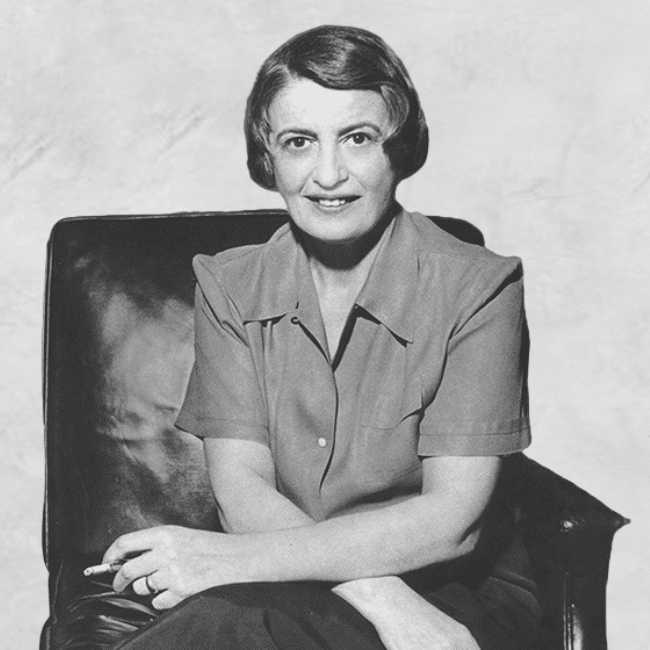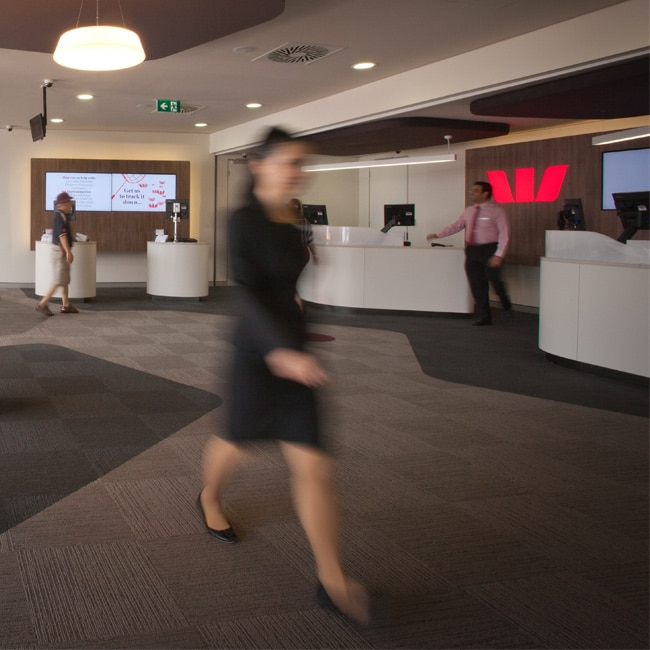Feeling our way through tragedy

The emotions we feel in the wake of a tragedy, like the Bondi Beach shooting, are as intense as they are natural. What matters is how we act on them.
It was a typical relaxed summer Sunday evening. We had just finished dinner and I was on the couch watching TV while my wife was in the other room catching up with family over a video call. Then a wayward notification caused me to idly glance at my phone. A headline popped up on the screen, I caught my breath and switched on the news.
And in a matter of moments, the peace was shattered as the news came in that two men had opened fire on a group of people enjoying their own relaxed summer Sunday evening celebrating Hanukkah on Bondi Beach. A wave of emotions followed: horror, grief and outrage, followed by a gnawing sense of uncertainty. Were any of my friends or family there? What could drive someone to commit such an atrocity? Is anywhere safe?
These are typical emotions when confronted by sights such as these. The feelings well up from our bellies, fill our chest, overwhelm our minds. They are as primitive as they are potent. And they demand closure.
Yet emotions like these can be channelled in many different ways. Some forms of emotional closure are healthy. But other courses can end up causing more harm, either to ourselves or to others. And while it is easy to let these types of emotions consume us, it is crucial that we act on them ethically.
Horror and hope
Many creatures experience fear. It is a natural response to threat, and a potent motivator to remove ourselves from its presence. But our species is unique – as far as we know – in our ability to experience horror. Horror is also bound up with shock, disgust and dread. It is a response to the most acute violations of our humanity. The thing is, we don’t only experience horror when we are under threat, but when someone else is threatened. Underneath horror is a recognition of our shared sacred humanity and a revulsion at its desecration.
The problem is that the sense of horror triggered by an attack such as that at Bondi Beach on 14 December 2025 can change the way we see the world. In our aroused state, we become hyper vigilant to cues that might indicate future threats. And those cues will be associated with the location of the shooting, perhaps making us reluctant to go to Bondi Beach, or even causing us to fear going out in public at all.
If we allow emotion to take over, it can make the world feel less safe and other people seem more threatening.
But that response overlooks the fact that, despite the magnitude of the atrocity, this is an incredibly rare event perpetrated by only a few people. The fact that our feeling of horror is shared by millions of others around Australia and the world should serve as a reminder that the vast majority of us care deeply about our shared humanity, and it is those people that make the world safe. Should we retreat from the world out of fear, we do ourselves, and every decent horrified person around us, a disservice.
Following horror might be an overwhelming grief at the pain and suffering inflicted upon innocent people. This grief can lead to a feeling of powerlessness and despondency, one that again nudges us to retreat from the world. But, as painful as it is, our grief is proportional to our love. If we didn’t care for the lives of others – even people we have never met and will never know – then we wouldn’t feel grief. So we needn’t let grief strip us of our agency. Instead, we can let it remind us to lean into love and motivate us to reach out to others with greater patience and understanding.
A fire for justice
Possibly the most dangerous emotion in this list is outrage. This is another primitive emotion that motivates us to correct wrongdoing and punish wrongdoers. Outrage demands satisfaction, but it’s often not fussy about how that satisfaction is achieved. Great evils have been committed at the hand of outrage, and great injustices perpetrated to satisfy its call.
We must acknowledge when we feel outrage but be wary of its call to immediately find someone to blame and punish. Within an hour of the shooting, the media was already mentioning a name of one of the attackers, feeding the audience’s hunger for justice. But in its haste, it caught up an innocent man who then experienced unwarranted threats. Others rushed to blame the authorities for failing to prevent the attack or refusing to combat antisemitism.
Even when things look clear at first glance, we must remind ourselves that it’s all too easy to blame the wrong person or seek punishment just for the sake of satisfaction. And sometimes there is no one person to blame. Sometimes the causes of an atrocity are complex and interlaced. Sometimes there were multiple causes and nothing anyone could have done to prevent it. So we must temper outrage with a deeper commitment to genuine justice, lowering the temperature and working to understand the whole picture before calling for punishment.
I acknowledge that it can be difficult to pause in the heat of the moment, especially when we only have a fragmentary grasp of what’s going on and what caused it.
In times of uncertainty or ambiguity, we crave clarity and certainty. We seek out and latch on to the first available narrative that seems to make sense of a great tragedy. We like the feeling of being certain more than we like doing the work to interrogate our beliefs to ensure they warrant certainty.
We thus have a tendency to be drawn to narratives that align with our pre-existing beliefs or biases. Uncertainty and ambiguity can be like a Rorschach test. The patterns we see tell us more about ourselves than reality. If we don’t want to exacerbate injustice by generating or sharing false narratives that can cause real harm, we need to learn to sit with the uncertainty and dwell in the ambiguity. We are not naturally inclined to do so, but that only means we need to practice getting better at it.
The very fact we typically experience emotions like horror, grief, outrage and uncertainty speak to our deeper humanity. They speak to how much we care about others and living in a world where everyone deserves to be safe and thrive. If we allow the better angels of our nature to rise to the surface, and resist the temptation to satisfy our emotions in ways that cause more harm, we can respond in a genuinely ethical way.
Image by ZUMA Press, Inc / Alamy
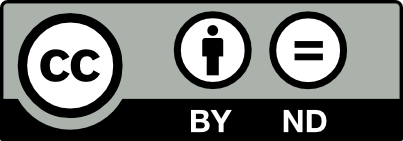
BY Tim Dean
Dr Tim Dean is a public philosopher, speaker and writer. He is Philosopher in Residence and Manos Chair in Ethics at The Ethics Centre.
Ethics in your inbox.
Get the latest inspiration, intelligence, events & more.
By signing up you agree to our privacy policy
You might be interested in…
Opinion + Analysis
Relationships, Society + Culture
Beyond cynicism: The deeper ethical message of Ted Lasso
Explainer
Society + Culture, Politics + Human Rights
Ethics Explainer: Moral Courage
Opinion + Analysis
Relationships, Society + Culture
Violence and technology: a shared fate
Big thinker
Society + Culture, Business + Leadership
Big Thinker: Ayn Rand
Why leisure matters for a good life, according to Aristotle

Why leisure matters for a good life, according to Aristotle
Opinion + AnalysisHealth + Wellbeing
BY Ross Channing Reed 4 DEC 2025
In his powerful book “The Burnout Society,” South Korean philosopher Byung-Chul Han argues that in modern society, individuals have an imperative to achieve. Han calls this an “achievement society” in which we must become “entrepreneurs” – branding and selling ourselves; there is no time off the clock.
In such a society, even leisure risks becoming another kind of work. Rather than providing rest and meaning, leisure is often competitive, performative and exhausting.
People feeling pressure to self-promote, for example, might spend their free time posting photos of an athletic race or an elaborate vacation on social media to be viewed by family, friends and potential employers, adding to exhaustion and burnout.
As a philosopher and philosophical counselor, I study connections between unhealthy forms of leisure and burnout. I have found that philosophy can help us navigate some of the pitfalls of leisure in an achievement society. The celebrated Greek philosopher Aristotle, who lived from 384 to 322 B.C.E., in particular, can offer important insights.
Aristotle on self-development
Aristotle begins the famous Nicomachean Ethics by pointing out that we are all searching for happiness. But, he says, we are often confused about how to get there.
Aristotle believed that pleasure, wealth, honour and power will not ultimately make us happy. True happiness, he said, required ethical self-development: “Human good turns out to be activity of soul in accordance with virtue.”
In other words, if we want to be happy, Aristotle contended, we must make reasoned choices to develop habits that, over time, become character traits such as courage, temperance, generosity and truthfulness.
Aristotle is explicitly linking the good life to becoming a certain kind of person. There is no shortcut to ethical self-development. It takes time – time off the clock, time not engaged in some kind of entrepreneurial self-promotion.
Aristotle is also telling us about the power of our choices. Habits, he argues, are not just about action, but also motives and character. Our actions, he says, actually change our desires. Aristotle says: “By abstaining from pleasures we become temperate, and it is when we have become so that we are most able to abstain from them.”
In other words, good habits are the result of moving incrementally in the right direction through practice.
For Aristotle, good habits lead to ethical self-development. The converse is also true. To this end, for Aristotle, having good friends and mentors who guide and support moral development are essential.
How Aristotle helps us understand leisure
In an achievement society, we are often conditioned to respond to external pressures to self-promote. We may instead look to pleasure, wealth, honour and power for happiness. This can sidetrack the ethical development required for true happiness.
True leisure – leisure that is not bound to the imperative to achieve – is time we can reflect on our real priorities, cultivate friendships, think for ourselves, and step back and decide what kind of life we want to live.
The Greek word eudaimonia, often translated simply as happiness, is the term Aristotle uses to describe human thriving and flourishing. According to philosopher Jane Hurly, Aristotle views “leisure as essential for human thriving”. Indeed, “for both Plato and Aristotle leisure… is a prerequisite for the achievement of the highest form of human flourishing, eudaimonia”, as philosopher Thanassis Samaras argues.
While we may have limited means to acquire pleasure, wealth, honour and power, Aristotle tells us that we have control over the most important variable in the good life: what kind of person we will become. Leisure is crucial because it is time in which we get to decide what kind of habits we will develop and what kind of person we will become. Will we capitulate to achievement society? Or utilise our free time to develop ourselves as individuals?
When leisure is preoccupied with entrepreneurial self-promotion, it is difficult for moral development to take place. Free time that is not hijacked by the imperative to achieve is required for the development of a consistent relationship to oneself – what I call a relationship of self-solidarity – a kind of reflective self-awareness necessary to aim at the right target and make moral choices. Without such a relationship, the good life will remain elusive.
Leisure reimagined
Rather than adopting the achievement society’s formulation of the good life, we may be able to formulate our own vision. Without one’s own vision, we risk becoming mired in bad habits, leading us away from the moral development through which the good life becomes possible.
Aristotle makes it clear that we have the power to change not only our behaviours but our desires and character. This self-development, as Aristotle writes, is a necessary part of the good life – a life of eudaimonia.
The choices we make in our free time can move us closer to eudaimonia. Or they could move us in the direction of burnout.
The article was originally published in The Conversation.

BY Ross Channing Reed
Ross Channing Reed, Ph.D., teaches philosophy at Missouri University of Science and Technology. His areas of research include philosophical psychology and philosophical counselling, addiction, trauma, existentialism, ethics, and philosophy of religion.
Ethics in your inbox.
Get the latest inspiration, intelligence, events & more.
By signing up you agree to our privacy policy
You might be interested in…
Opinion + Analysis
Health + Wellbeing, Business + Leadership
The ethical dilemma of the 4-day work week
Opinion + Analysis
Health + Wellbeing, Relationships
How to pick a good friend
Opinion + Analysis
Health + Wellbeing, Relationships
Eight questions to consider about schooling and COVID-19
LISTEN
Health + Wellbeing, Society + Culture
Life and Debt
The ethics of AI’s untaxed future

The ethics of AI’s untaxed future
Opinion + AnalysisScience + TechnologyBusiness + Leadership
BY Dia Bianca Lao 24 NOV 2025
“If a human worker does $50,000 worth of work in a factory, that income is taxed. If a robot comes in to do the same thing, you’d think we’d tax the robot at a similar level,” Bill Gates famously said. His call raises an urgent ethical question now facing Australia: When AI replaces human labour, who pays for the social cost?
As AI becomes a cheaper alternative to human labour, the question is no longer if it will dramatically reshape the workforce, but how quickly, and whether the nation’s labour market can adapt in time.
New technology always seems like the stuff of science fiction until its seamless transition from novelty to necessity. Today AI is past its infancy and is now shaping real-world industries. The simultaneous emergence of its diverse use cases and the maturing of automation technology underscores how rapidly it’s evolving, transforming this threat into reality sooner than we think.
Historically, automation tended to focus on routine physical tasks, but today’s frontier extends into cognitive domains. Unlike past innovations that still relied on human oversight, the autonomous nature of emerging technologies threatens to make human labour obsolete with its broader capabilities.
While history shows that technological revolutions have ultimately improved output, productivity, and wages in the long-term, the present wave may prove more disruptive than those before. In 2017, Bill Gates foresaw this looming paradigm shift and famously argued for companies to pay a ‘robot tax’ to moderate the pace at which AI impacts human jobs and help fund other employment types.
Without any formal measures, the costs of AI-driven displacement will likely mostly fall on workers and society, while companies reap the benefits with little accountability.
According to the World Economic Forum, while AI is predicted to create 69 million new jobs, 83 million existing jobs may be phased out by 2027, resulting in a net decrease of 14 million jobs or approximately 2% of current employment. They also projected that 23% of jobs globally will evolve in the next five years, driven by advancements in technology. While the full impact is not yet visible in official employment statistics, the shift toward reducing reliance on human labour through automation and AI is already underway, with entry-level roles and jobs involving logistics, manufacturing, admin, and customer service being the most impacted.
For example, Aurora’s self-driving trucks are officially making regular roundtrips on public roads delivering time- and temperature-sensitive freight in the U.S., while Meituan is making drone deliveries increasingly common in China’s major cities. We now live in a world where you can get your boba milk tea delivered by a drone in less than 20 minutes in places like Shenzhen. Meanwhile in Australia, Rio Tinto has also deployed fully autonomous trains and autonomous haul trucks across its Pilbara iron ore mines, increasing operational time and contributing to a 15% reduction in operating costs.
Companies have already begun recalibrating their workforce, and there is no stopping this train. In the past 12 months, CBA and Bankwest have cut hundreds of jobs across various departments despite rising profits. Forty-five of these roles were replaced by an AI chatbot handling customer queries, while the permanent closure of all Bankwest branches has seen the bank transition to a digital bank, with no intention of bringing back the lost positions. While some argue that redeployment opportunities exist or new jobs might emerge, details remain vague.
Is it possible to fully automate an economy and eliminate the need for jobs? Elon Musk certainly thinks so. It’s no wonder that a growing number of tech elite are investing heavily to replace human labour with AI. From copywriting to coding, AI has proven its versatility in speeding up productivity in all aspects of our lives. Its potential for accelerating innovation, improving living standards and economic growth is unparalleled, but at what cost?
What counts as good for the economy has historically benefited a select few, with technology frequently being a catalyst for this dynamic. For example, the benefits of the Industrial Revolution, including the creation of new industries and increased productivity, were initially concentrated in the hands of those who owned the machinery and capital, while the widespread benefits trickled down later. Without ethical frameworks in place, AI is positioned to compound this inequality.
Some proposals argue that if we make taxes on human labour cheaper while increasing taxes on AI machines and tools, this could encourage companies to view AI as complementary instead of a replacement for human workers. This levy could be a means for governments to distribute AI’s socioeconomic impacts more fairly, potentially funding retraining or income support for displaced workers.
If a robot tax is such a good idea, then why did the European Parliament reject it? Many argue that taxing productivity tools could hinder competitiveness. Without global coordination to implement this, if one country taxes AI and others don’t, it may create an uneven playing field and stifle innovation. How would policymakers even define how companies would qualify for this levy or measure how much to tax, when it’s hard to attribute profits derived from AI? Unlike human workers’ earnings, taxing AI isn’t as straightforward.
The challenge of developing policies that incentivise innovation while ensuring that its benefits and burdens are shared responsibly across society persists. The government’s focus on retraining and upskilling workers to help with this transition is a good start, but they cannot address all the challenges of automation fast enough. Relying solely on these programs risk overlooking structural inequities, such as the disproportionate impact on lower-income or older workers in certain industries, and long-term displacement, where entire job categories may vanish faster than workers can be retrained.
Our fiscal policies should adapt to the evolving economic landscape to help smooth this shift and fund social safety nets. A reduction in human labour’s share in production will significantly impact government revenue unless new measures of taxing capital are introduced.
While a blanket “robot tax” is impractical at this stage, incremental changes to existing taxation policies to target sectors that are most vulnerable to disruption is a possibility. Ideally, policies should distinguish the treatment between technologies that substitute for human labour, and those that complement them, to only disincentivise the former. While this distinction can be challenging, it offers a way to slow down job displacement, giving workers and welfare systems more time to adapt and generate revenue to help with the transition without hindering productivity.
As Microsoft’s CEO Satya Nadella warns, “With this empowerment comes greater human responsibility — all of us who build, deploy, and use AI have a collective obligation to do so responsibly and safely, so AI evolves in alignment with our social, cultural, and legal norms. We have to take the unintended consequences of any new technology along with all the benefits, and think about them simultaneously.”
The challenge in integrating AI more equitably into the economy is ensuring that its broad societal benefits are amplified, while reducing its unintended negative consequences. AI has the potential to fundamentally accelerate innovation for public good but only if progress is tied to equitable frameworks and its ethical adoption.
Australia already regulates specific harms of AI, protecting privacy and personal information through the Privacy Act 1988 and addressing bias through the Australian Privacy Principles (APPs). These examples show that targeted regulation is possible. However, the next step should include ethical guardrails for AI-driven job displacement, such as exploring more equitable taxation, redistribution policies, and accountability frameworks before it’s too late. This transformation will require joint collaboration from governments, companies, and global organisations to collectively build a resilient and inclusive AI-powered future.
The ethics of AI’s untaxed future by Dia Bianca Lao is one of the Highly Commended essays in our Young Writers’ 2025 Competition. Find out more about the competition here.

BY Dia Bianca Lao
Dia Bianca Lao is a marketer by trade but a writer at heart, with a passion for exploring how ethics, communication, and culture shape society. Through writing, she seeks to make sense of complexity and spark thoughtful dialogue.
Ethics in your inbox.
Get the latest inspiration, intelligence, events & more.
By signing up you agree to our privacy policy
You might be interested in…
Opinion + Analysis
Business + Leadership
Is it fair to expect Australian banks to reimburse us if we’ve been scammed?
Opinion + Analysis
Business + Leadership, Relationships
Beyond the headlines of the Westpac breaches
Opinion + Analysis
Business + Leadership, Health + Wellbeing
Is your workplace turning into a cult?
Explainer
Business + Leadership, Politics + Human Rights
Ethics Explainer: Liberalism
Who gets heard? Media literacy and the politics of platforming
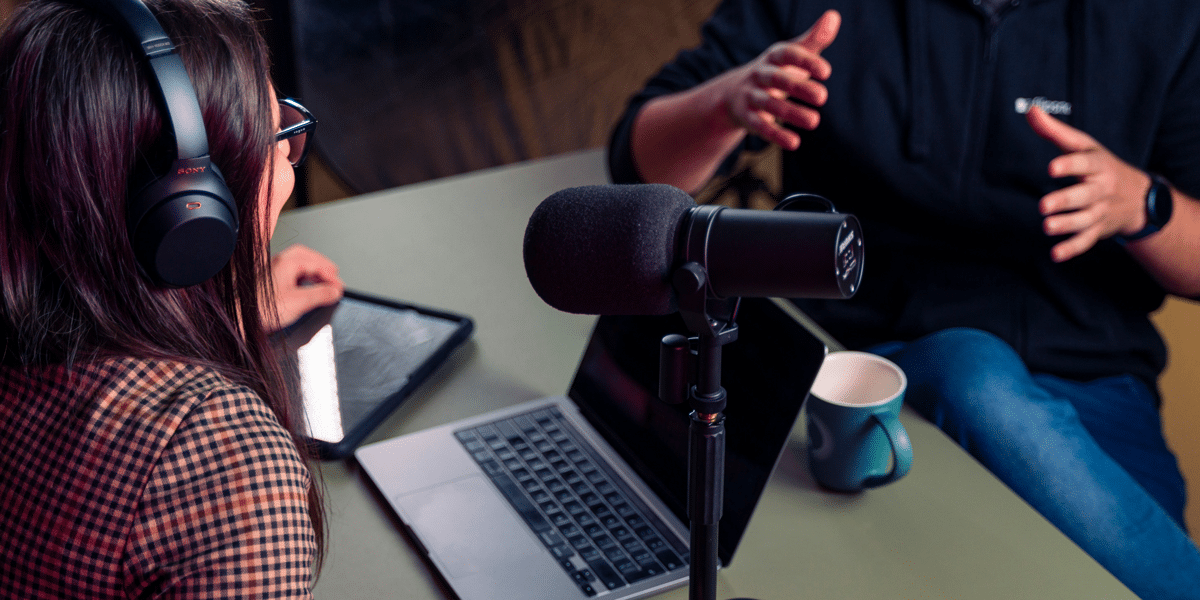
Who gets heard? Media literacy and the politics of platforming
Opinion + AnalysisSociety + CulturePolitics + Human Rights
BY Aubrey Blanche 20 NOV 2025
In an age where emotionally charged information travels faster than ever, the ability to critically evaluate what we read, watch, and share is the cornerstone of responsible citizenship. It’s essential that we’re able to strengthen our media literacy skills to detect bias, maintain trust and safeguard the integrity of public discourse.
Since the rise of generative AI, we have become inundated with content. It’s easier to generate and disseminate information than ever before. When content is cheap, it’s curation and discernment that becomes ever more critical.
And this matters – how information travels influences policy, the bounds of acceptable discourse, and ultimately how our society functions. This means that each of us, whether a social media user, producer of a major national news program, or just someone chatting with a friend, has an obligation to ensure that the truth we share contributes to human flourishing.
What is verifiable?
The reality is that a huge amount of the information we have access to is, well, fake. Media literacy equips people to recognise bias, detect misinformation, and understand the motives behind content creation. Without these skills, we and those around us become vulnerable to manipulation, whether through sensational headlines, deepfakes, or algorithm-driven echo chambers.
Verifying information before sharing is a critical part of media literacy. Every click and share amplifies a message, whether true or false. For example, deepfakes of Scott Morrison and other politicians have been used to perpetuate investment scams. When inaccurate information spreads unchecked, it can fuel polarisation, erode trust in institutions, and even endanger lives. Taking a moment to analyse the source, check for corroboration in other trusted places, and question the credibility of a claim is a small act with enormous impact. It transforms passive consumers into active participants in a healthier information ecosystem.
Whose truth?
What we see as objective is intrinsically shaped by the voices we are exposed to, and how often. This is as true for our social media feeds as it is for the nightly news. The messages that reach us are all in some way biased, meaning that they possess some kind of embedded agenda. But what we most often mean when we talk about bias, is a systematic and repeated filtering or skewing of information to conform to a particular or narrow agenda or worldview.
Because of this, we should be wary of potential bias when issues are covered by individuals or organisations with financial or political interests at stake. For example, jurisdictions around the world are currently wrestling with questions of how training large language models (LLMs) relates to fair use of copyrighted work. In Australia, the government recently ruled out a special exception for AI models to be trained on Australian works without explicit permission or payment. While there was public consultation conducted, prominent voices didn’t all agree with protecting the labor and output of creators as a priority.
Before the federal government made the determination, powerful members of the technology industry were consulted by journalists for their views on how the interests of AI labs and creators should be considered. These voices included those whose financial holdings include investments in the type of AI companies (and their methods) being discussed. Platforming voices with these interests has important implications for setting the terms of the debate as potentially more pro-technology, rather than encouraging a balance of perspectives.
While this specific issue is critical because it’s an issue that affects all of us, it also illustrates a way that we can practice media responsibly.
When we are sharing information, we should consider the interests and ideological alignment of those who are sharing.
Where possible, we should seek to provide a balanced set of perspectives, and ideally one in which any conflicts of interest are clear and disclosed.
Who gets platformed?
There is no free marketplace of ideas. The question of what voices and perspectives are platformed and held up as truth, whether in the media or on our feeds, greatly impacts our our own narratives of events. For example, since October 2023, more than 67,000 Gazans have been killed by Israeli forces. While the genocide has received significant media coverage, the perspectives of people impacted haven’t been equitably represented in mainstream media sources. Recently, a study found that only one Palestinian guest had been booked to share their views on major US Sunday news shows (which set the national agenda) in the last 2 years. In the same period, 48 Israeli guests had been given airtime.
If we assume that Israeli guests do not have a monopoly on the truth, this pattern looks alarming. While this study didn’t speak to the views of the guests, a reasonable person would assume that such a skew in the identities and affiliations represented present a rather one-sided view of events on the ground.
In this case, the platforming also speaks to the relative power of the perspectives. Despite the Palestinian community having the greatest lived experience of harm, their voices are effectively silenced. As we consider from whom we share information, we should always consider the following questions:
- Which individuals or groups have greater access to institutions – media or otherwise – to share their experience?
- In the case of conflict, are opposing forces equally powerful (eg in terms of financial resources, alliances, etc)?
- Who is marginalised, and what is the impact of not platforming that voice?
In today’s media environment, we are flooded with information. This means that the responsibly each of us must take in our sphere of influence has increased proportionally. In order to act as responsible members of our community, we must question which voices we’re highlighting.

BY Aubrey Blanche
Aubrey Blanche is a responsible governance executive with 15 years of impact. An expert in issues of workplace fairness and the ethics of artificial intelligence, her experience spans HR, ESG, communications, and go-to-market strategy. She seeks to question and reimagine the systems that surround us to ensure that all can build a better world. A regular speaker and writer on issues of responsible business, finance, and technology, Blanche has appeared on stages and in media outlets all over the world. As Director of Ethical Advisory & Strategic Partnerships, she leads our engagements with organisational partners looking to bring ethics to the centre of their operations.
Ethics in your inbox.
Get the latest inspiration, intelligence, events & more.
By signing up you agree to our privacy policy
You might be interested in…
Opinion + Analysis
Society + Culture
FODI digital returns for three dangerous conversations
Opinion + Analysis
Relationships, Society + Culture
FODI launches free interactive digital series
Opinion + Analysis
Business + Leadership, Relationships, Society + Culture
Renewing the culture of cricket
Big thinker
Politics + Human Rights
Big Thinker: Thomas Hobbes
Big Thinker: Thomas Hobbes

Thomas Hobbes (1588-1679) was an English philosopher, best known for his explanation of the role of government as an insurer of security, which has had an enduring influence on understandings of political philosophy.
Living through the displacement of the English Civil War (1642-1651), Hobbes was grappling with the question of how societies could keep peace and ensure stability, amid conflict and self-interest. The period was marked by social upheaval with the collapse of royal authority, clashes between the government and monarchy and insecurity, which led to him thinking about the manifestations of power, the human condition and the role of government.
His approach to understanding human behaviour was methodical and scientific, being deeply influenced by the scientific revolution of the time. Hobbes believed that human societies, like physical systems, could be understood through cause and effect and that understandings of order and stability were derived from the predictability of human behaviour and power structures.
The state of nature
It was from this historical and intellectual backdrop that Hobbes produced his most famous work, Leviathan (1651). His masterwork Leviathan: The Matter, Forme and Power of a Commonwealth Ecclesiasticall and Civil, garnered him fame for creating what would later become known as the Social Contract Theory, a framework that explains and justifies the exchange that free, equal and rational citizens make in surrendering certain freedoms in return for collective order and protection. This same contract also serves to provide legitimacy to governments and their use of power and authority over citizens.
In Leviathan and his other work, Hobbes disagrees with Aristotle that humans are naturally suited to life as citizens within a state. Hobbes instead argues that humans are not equipped to be rational citizens, as we are easily swayed, often short sighted and highly competitive. He believes these characteristics make humans more predisposed to violence and war rather than political order, with no natural self-restraint. Hobbes states that in this state of nature, without government and order, the life of man is “poor, nasty, brutish and short”, largely due to the insecurity and conflict. Everyone is free and equal, without any rules or restrictions to their actions and coupled with a self interested nature and limited resources, life in this state is a constant struggle.
The social contract
To escape this constant struggle in this state of nature, Hobbes argues that people, through reason, collectively agree to create a social contract. Hobbes believes that political order is only formed when human beings voluntarily give up some of their rights and freedoms, in exchange for order and security from a common authority, the leviathan (a ruler).
Hobbes uses the Leviathan as a metaphor for a powerful ruler or government that embodies the collective will of the people, possessing absolute authority to maintain peace and prevent society from descending back into chaos. Hobbes conception of a social contract and the role of the sovereign or leviathan, refers to these key characteristics:
- The sovereign or leviathan’s power must be absolute – only one authority, as divided power invites factionalism.
- The contract is driven by the purpose of security.
- Individuals cannot revoke the contract once it’s been made, as it would risk bringing back chaos.
- The contract is between the people and the sovereign is not party to this agreement. However, if the sovereign fails to maintain peace and security, the contract loses legitimacy and people return to the state of nature.
This framework for the social contract theory by Hobbes, was adopted by John Locke and Jean-Jaques Rousseau. However, they differed from Hobbes by offering a more optimistic view of human behaviour and the role of government. Critical responses tended to focus on a lack of accountability measures on the leviathan who has expansive absolute power. Locke for example took a liberal view, involving limited government and argued the leviathan was mutually obligated within a social contract, rather than subjects being expected to obey unconditionally to avoid the collapse of civil society.
Hobbes’s ideas continue to shape how government and authority is understood. While very few modern states reflect the vision of an absolute sovereign, the core principles of the social contract theory remain central to political thought. The consent of citizens to be governed in exchange for protection and the rule of law persists. However, in modern liberal democracies, the power of governments is placed under greater scrutiny through constitutions, elections and other checks and balances. Hobbes’s theory provides the foundation for understanding why societies form governments, even as modern democracies reinterpret his ideas to prioritise liberty, representation, and accountability alongside security and order.

BY The Ethics Centre
The Ethics Centre is a not-for-profit organisation developing innovative programs, services and experiences, designed to bring ethics to the centre of professional and personal life.
Ethics in your inbox.
Get the latest inspiration, intelligence, events & more.
By signing up you agree to our privacy policy
You might be interested in…
Opinion + Analysis
Politics + Human Rights
Sportswashing: How money and politics are corrupting sport
Big thinker
Politics + Human Rights, Relationships
Big Thinker: Eleanor Roosevelt
Opinion + Analysis
Politics + Human Rights, Relationships, Society + Culture
You won’t be able to tell whether Depp or Heard are lying by watching their faces
Opinion + Analysis
Society + Culture, Politics + Human Rights
Freedom of expression, the art of…
Should we be afraid of consensus? Pluribus and the horrors of mainstream happiness
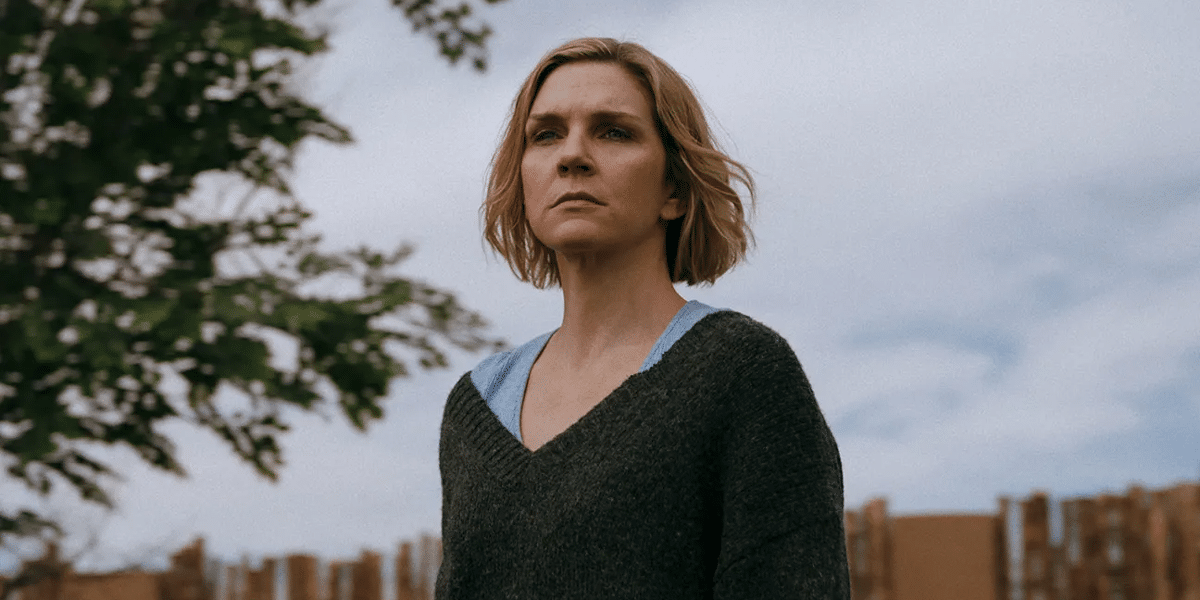
Should we be afraid of consensus? Pluribus and the horrors of mainstream happiness
Opinion + AnalysisSociety + Culture
BY Joseph Earp 12 NOV 2025
Partway through Dostoyevsky’s The Brothers Karamazov, the author neatly summarises one of the more troubling questions that undercuts civilisation: is it ethical for widespread happiness to come at the expense of the discontent of select individuals? Or, to put it simply: do the needs of the many outweigh the needs of the few?
“Let’s assume that you were called upon to build the edifice of human destiny so that men would finally be happy”, the troubled Ivan Karamazov says. “If you knew that, in order to attain this, you would have to torture just one single creature, would you agree to do it?”
That one question has been probed and explored time and time again in the years since Karamazov was published, most notably in Ursula LeGuin’s sci-fi story The Ones Who Walk Away from Omelas, in which the happiness of a flourishing city depends totally on the torture of a young girl. But it has perhaps never been as thoroughly – not to mention amusingly – explored to the extent that it is in Pluribus, the new sci-fi show from Breaking Bad creator Vince Gilligan.
In Gilligan’s re-telling, near-global happiness is an external force: a virus of sorts, which turns the world’s population into a hive mind of mutually contented drones. The one miserable, unlucky individual whose perpetual unhappiness sets her apart from the mainstream: Carol Sturka (Rhea Seehorn), who appears to be immune to the virus. Or rather, temporarily immune, given much of the early episodes of the show follows the rising, blackly comic threat of the hive mind searching for ways to make Carol one of them.
“Once you see how wonderful it is….” a member of the hive mind tells Carol early on, speaking to her directly from her television set. The hive promises happiness, peace and the end of all human conflict. What they also represent: the tyranny of mainstream thought, an enforced and established consensus where majority rules, no matter how discontented outliers might be. And where happiness itself is dangerously considered the main goal of all human existence.
The problem with happiness
One of Gilligan’s masterstrokes is to set Carol out of the mainstream even before the virus spreads. When we meet her, she’s a beloved romantasy author who can’t stand either the mindless content that she churns out, or the horde of rabid fans who adore her. In the first episode, her business/life partner Helen (Miriam Shor) mocks Carol’s dislike of adulation, teasing that she’s a perpetual miser, illogically rejecting the good time that’s being offered to her.
But when the mainstream offers mere happiness, we should reject it, as both Gilligan and Dostoyevsky seem to suggest. A life of contentment and fitting in with the crowd isn’t an ethical good in and of itself. As the rise of increasingly deranged social media slop proves – the kind of quick dopamine fix provided by TikTok – there’s so much more to life than merely being entertained.
The person who sits in their room all day watching Instagram reels could conceivably be very happy, but wouldn’t we all suggest that they might want more? Should they in fact pursue something greater and more important than simply having a good time?
This is the threat posed by Pluribus’ hive. In an ideal world, happiness should be a kind of side effect of good, not something to be pursued blindly for its own sake. As in, happiness should be what happens when we achieve virtuous behaviours – when we care for others, or pursue a flourishing life. And it certainly should not be enforced by the mainstream at the expense of individual freedoms and wants.
Even as Pluribus’ plot progresses, and it is revealed that Carol’s unhappiness is a very literal threat to the hive – when she lashes out at them, members of the hive abruptly die – the needs of those who sit in the mainstream should never be held above the deep unhappiness of those who also must operate within the world. Not only because enforcing the desires of the collective onto the individual is a harm in itself, but because sometimes – maybe even often – the desires of the collective aren’t particularly desirable.
In praise of conflict
Pluribus slowly encourages us to be suspicious of the idea that the hive are actually as happy as they claim to be. Do we really think that happiness is only a flood of dopamine throughout our body? If so, then as the philosopher Robert Nozick once asked, wouldn’t we therefore choose to step into a machine that did nothing but probe our dopamine receptors for all eternity, living an artificial life where we submit to being little more than switches that can be flipped in order to produce joy?
It doesn’t seem like many of us consider happiness only that. Happiness is what happens when we go to the other side of hardship; when we set ourselves goals and then achieve them. Ultimately, it’s a response to conflict and unhappiness, not the absence of conflict and unhappiness altogether.
Enforced mainstream happiness isn’t just ethically harmful for those who have it enforced upon them; it might be harmful to those who actively want it.
In the age of AI, these issues have never been more timely. In fact, Gilligan himself seems aware of this: each episode of Pluribus ends with a message, hidden in the credits, that reads, “this show was made by humans”.
We live in an era where tech companies constantly promise us that AI will bring ease, contentment, and the ability to fit in with our co-workers, friends and family – with the collective. Even if AI can do our jobs for us, or write tricky text messages to our loved ones, decreasing our discomfort, why would we even want that?
Now more than ever, we should follow Carol’s lead and become perpetual sourpusses. As it turns out, being a grump might be one of the most ethical things of all.

BY Joseph Earp
Joseph Earp is a poet, journalist and philosophy student. He is currently undertaking his PhD at the University of Sydney, studying the work of David Hume.
Ethics in your inbox.
Get the latest inspiration, intelligence, events & more.
By signing up you agree to our privacy policy
You might be interested in…
Opinion + Analysis
Society + Culture, Business + Leadership
How to tackle the ethical crisis in the arts
Opinion + Analysis
Relationships, Society + Culture
In Review: The Festival of Dangerous Ideas 2018
Opinion + Analysis
Science + Technology, Business + Leadership, Society + Culture
AI might pose a risk to humanity, but it could also transform it
Opinion + Analysis
Relationships, Society + Culture
FODI launches free interactive digital series
Standing up against discrimination

Standing up against discrimination
Opinion + AnalysisPolitics + Human RightsRelationships
BY Mariam Sawan 11 NOV 2025
A fantastic opportunity arrived when Courage to Care NSW and The Ethics Centre launched a pivotal program for young people across our state, proudly funded by Multicultural NSW’s Compact Grant program. The focus? One of the most pressing struggles Australians continue to face or witness: discrimination.
Over three days, Year 9 and 10 students from across the Illawarra gathered at the Wollongong Youth Centre to take part in the Common Ground program. Together, we learnt not only to recognise discrimination in its many forms but also to challenge and overcome it, helping to build a community where everyone feels safe and accepted, regardless of culture, background, or ability.
Before participating in the program, I understood discrimination only as something “bad” – a simple wrong we were all taught to avoid, without ever questioning why it happens or what sustains it.
Growing up with a multicultural background, I have faced many stereotypical insults, but I never really saw them as a big deal. I knew discrimination existed, but I only saw it at face value – people saying hurtful things to make themselves feel better. Through a series of activities, case studies and creative programs, Common Ground showed me just how complex it is. While I knew discrimination could involve gender, religion, disability, and age, I had assumed it only appeared in big, obvious ways like bullying. I had not considered the smaller, everyday forms such as jokes, exclusion, or subtle assumptions. I learnt how hidden these forms of discrimination can be, shifting my mindset completely. Now I am more empathetic and aware, thinking about the meaning behind a joke rather than dismissing it and have the confidence and practical skills needed to fight what can only be described as a virus of hatred.
What stood out most was how effortlessly the organisers drew us into a topic we’d all heard about countless times before. But this time, it felt different. We were guided by “value cards” that highlighted the program’s principles, especially the three C’s: curiosity, carefulness, and courage. These sparked deep discussions about what those values meant to each of us, encouraging us to explore the issue of discrimination on a personal level.
I had previously thought curiosity was only about seeking knowledge, but the program taught me it is about listening and understanding people’s experiences without judgment. Carefulness is not just about thinking before speaking; it is also about considering how my actions affect others. Courage is having the confidence to try something new and to challenge discrimination respectfully. Hearing how other students approached these values showed me there is more than one way to make a difference and that small actions can matter just as much as big ones. My perspective changed completely.
The activities Common Ground provided were equally eye-opening. An online game showed how misinformation spreads like wildfire on social media, shaping perceptions and fuelling prejudice. Another exercise asked us to “buy privileges” for a child, using only a limited budget. The unfairness of unequal resources became painfully clear as some children could afford opportunities while others missed out. In our final group project, we created videos exploring real experiences of discrimination and brainstorming ways to combat it.
The third and final day brought together students from across the Wollongong LGA for a mix of learning, competition, and celebration. Two teams tied for the People’s Choice Award, with powerful presentations on racial and religious discrimination. The overall winners, however, tackled racial discrimination in a striking way. Their victory came with $1,000 in prize money, which they generously donated to Illawarra Multicultural Services, an organisation that supports migrants and refugees with housing, jobs, and community support.
By the end of the program, the message was clear. We, as young people, had not only learned how to recognise discrimination – even in its subtlest forms – but also how to respond with confidence, safety, and integrity.
The Common Ground program didn’t just teach us about injustice; it empowered us to become catalysts for change, fostering communities built on diversity, inclusiveness, and support.
Common Ground is a workshop program for Year 9-10 students that empowers them to stand up against discrimination. We’re taking expressions of interest for schools in South West Sydney to join this free program in Term 2, 2026. Register your school’s interest today by contacting us at learn@ethics.org.au.

BY Mariam Sawan
Mariam Sawan is a high school student who enjoys learning about how people can make a positive impact in their community and understanding people’s points of view. After participating in the Common Ground program on discrimination, she was inspired to write the article “Standing Up Against Discrimination”. Through her writing, she hopes to encourage others to treat everyone with fairness and respect and to feel empowered to speak up against injustice.
Ethics in your inbox.
Get the latest inspiration, intelligence, events & more.
By signing up you agree to our privacy policy
You might be interested in…
Explainer
Politics + Human Rights, Relationships
Ethics Explainer: Dignity
Opinion + Analysis
Health + Wellbeing, Relationships
The Ethics of Online Dating
Opinion + Analysis
Business + Leadership, Relationships, Science + Technology
Are we ready for the world to come?
Opinion + Analysis
Politics + Human Rights
Is the right to die about rights or consequences?
Meet Aubrey Blanche: Shaping the future of responsible leadership
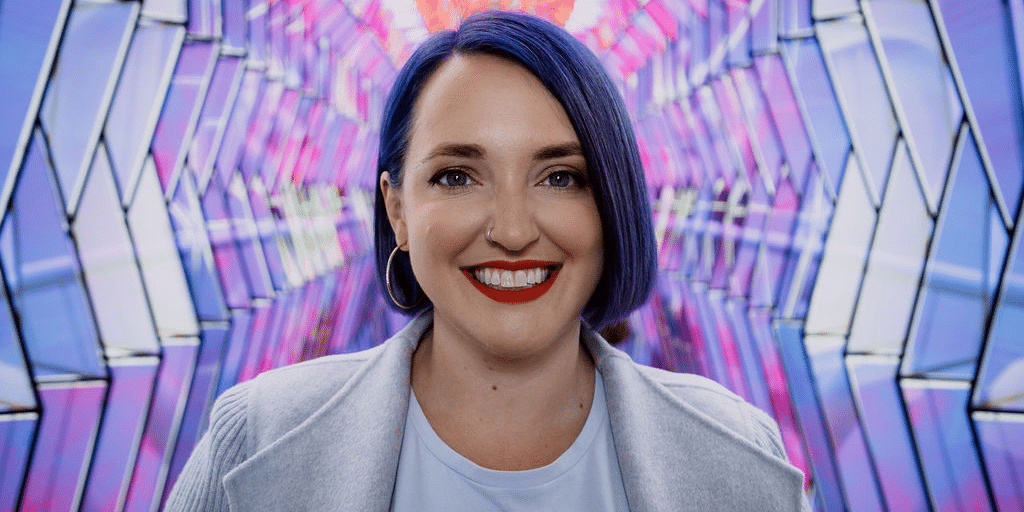
Meet Aubrey Blanche: Shaping the future of responsible leadership
Opinion + AnalysisBusiness + LeadershipScience + Technology
BY The Ethics Centre 4 NOV 2025
We’re thrilled to introduce Aubrey Blanche, our new Director of Ethical Advisory & Strategic Partnerships, who will lead our engagements with organisational partners looking to operate with the highest standards of ethical governance and leadership.
Aubrey is a responsible governance executive with 15 years of impact. An expert in issues of workplace fairness and the ethics of artificial intelligence, her experience spans HR, ESG, communications, and go-to-market strategy. She seeks to question and reimagine the systems that surround us to ensure that all can build a better world. A regular speaker and writer on issues of ethical business, finance, and technology, she has appeared on stages and in media outlets all over the world.
To better understand the work she’ll be doing with The Ethics Centre, we sat down with Aubrey to discuss her views on AI, corporate responsibility, and sustainability.
We’ve seen the proliferation of AI impact the way in which we work. What does responsible AI use look like to you – for both individuals and organisations?
I think that the first step to responsibility in AI is questioning whether we use it at all! While I believe it is and will be a transformative technology, there are major downsides I don’t think we talk about enough. We know that it’s not quite as effective as many people running frontier AI labs aim to make us believe, and it uses an incredible amount of natural resources for what can sometimes be mediocre returns.
Next, I think that to really achieve responsibility we need partnerships between the public and private sector. I think that we need to ensure that we’re applying existing regulation to this technology, whether that’s copyright law in the case of training, consumer protection in the case of chatbots interacting with children, or criminal prosecution regarding deepfake pornography. We also need business leaders to take ethics seriously, and to build safeguards into every stage from design to deployment. We need enterprises to refuse to buy from vendors that can’t show their investments in ensuring their products are safe.
And last, we need civil society to actively participate in incentivising those actors to behave in ways that are of benefit to all of society (not just shareholders or wealthy donors). That means voting for politicians that support policies that support collective wellbeing, boycotting companies complicit in harms, and having conversations within their communities about how these technologies can be used safely.
In a time where public trust is low in businesses, how can they operate fairly and responsibly?
I think the best way that businesses can build responsibility is to be more specific. I think people are tired of hearing “We’re committed to…”. There’s just been too much greenwashing, too much ethics washing, and too many “commitments” to diversity that haven’t been backed up by real investment or progress. The way through that is to define the specific objectives you have in relation to responsibility topics, publish your specific goals, and regularly report on your progress – even if it’s modest.
And most importantly, do this even when trust is low. In a time of disillusionment, you’ll need to have the moral courage to do the right thing even when there is less short-term “credit” for it.
How can we incentivise corporations to take responsible action on environmental issues?
I think that regulation can be a powerful motivator. I’m really excited that the Australian Accounting Standards Board is bringing new requirements into force that, at least for large companies, will force them to proactively manage climate risks and their impacts. While I don’t think it’s the whole answer, a regulatory “push” can be what’s needed for executives to see that actively thinking about climate in the context of their operations can be broadly beneficial to operations.
What are you most excited about sinking your teeth into at The Ethics Centre?
There’s so much to be excited about! But something that I’ve found wildly inspiring is working with our Young Ambassadors – early career professionals in banking and financial services who are working with us to develop their ethical leadership skills. While I have enjoyed working with our members – and have spent the last 15 years working with leaders in various areas of corporate responsibility – there nothing quite like the optimism you get when learning from people who care so much and who show us what future is possible.
Lastly – the big one, what does ethics mean to you?
A former boss of mine once told me that leadership is not about making the right choice when you have one: it’s about making the best choice you can when you have terrible ones and living with that choice. I think in many cases that’s what ethics is. It gives us a framework not to do the right thing when the answer is clear, but to align ourselves as closely as we can with our values and the greater good when our options are messy, complicated, or confusing.
Personally, I’ve spent a deep amount of time thinking about my values, and if I were forced to distill them down to two, I would wholeheartedly choose justice and compassion. I have found that when I consider choices through those frames, I both feel more like myself and like I’ve made choices that are a net good in the world. And I’ve been lucky enough to spend my career in roles where I got to live those values – that’s a privilege I don’t take for granted, and one of the reasons I’m so thrilled to be in this new role with The Ethics Centre.

BY The Ethics Centre
The Ethics Centre is a not-for-profit organisation developing innovative programs, services and experiences, designed to bring ethics to the centre of professional and personal life.
Ethics in your inbox.
Get the latest inspiration, intelligence, events & more.
By signing up you agree to our privacy policy
You might be interested in…
Opinion + Analysis
Business + Leadership
Ready or not – the future is coming
Opinion + Analysis
Health + Wellbeing, Business + Leadership
Repairing moral injury: The role of EdEthics in supporting moral integrity in teaching
Explainer
Business + Leadership, Politics + Human Rights, Relationships
Ethics Explainer: Power
Opinion + Analysis
Business + Leadership
How ‘ordinary’ people became heroes during the bushfires
Ask an ethicist: How much should politics influence my dating decisions?

Ask an ethicist: How much should politics influence my dating decisions?
Opinion + AnalysisRelationships
BY Daniel Finlay 3 NOV 2025
I’ve noticed on dating apps now that many people are displaying their political views on their profile. Is this something I should take into account when talking to someone? How picky should I be about politics when it comes to dating?
Dating is hard even under the best circumstances. Finding the balance between bearing your soul and maintaining a semblance of mysterious allure already feels like a circus feat – before we add in the complexity of having several of these conversations at once on our phones with people we’ve never met before.
If you do manage to wade through that surface mire of app dating, you’ll still be left with some of the harder decisions. A common focus is how we present ourselves. And that’s important – we understandably want to feel like we’re showing an accurate snippet of our identity.
But something to consider is the way that we often consciously or unconsciously judge, categorise, make assumptions about or dismiss people based on small aspects of their presentations of themselves.
Political ideologies, as indicated on dating profiles, usually reflect at least some of our deeply held beliefs. It’s tempting, then, at least for those of us who feel strongly, to use these little markers as a litmus test for our attention. In the age of online dating, we don’t want to waste our time vaguely flirting with someone who actually hates everything we stand for.
But…
Some open-mindedness, perspective-taking and empathy go a long way to breaking down the social barriers that encourage us into echo chambers.
I noticed this firsthand recently when talking to my friends about dating. I told them I had changed my profile to more explicitly reflect some of my political values. We mostly agreed that while it might drive some people away, it was likely to be people I’d be uninterested in regardless.
Then I told them that I often find myself having an adverse reaction to profiles that indicate someone is “Apolitical” or “Not Political” because I see this as apathetic and conflicting with my own strongly held beliefs. Instead of agreeing, they responded to this with variations of “But I’m not political!”.
This didn’t garner the response that I expected because I didn’t realise the way that my close friends thought about and categorised themselves. It turns out they too identified with those labels, not because they don’t have any political opinions, but because they don’t regard them as political. I hadn’t ever asked for their self-reflection before, and so I assumed that I knew how they thought about themselves.
Reframing
For lots of people, “politics” feels far away and unreachable: in rooms with suits, on tv or across the world, seats and benches in inaccessible buildings, smiles and virtue signals with little positive tangible effect.
But this doesn’t mean that someone who actively engages in the broader aspects of politics doesn’t have anything in common with the self-described “apolitical”. Neither does it mean that people on opposing sides of the spectrum have nothing in common.
Recognising this takes reflection on our own ability to remain open-minded, intellectually charitable, and curious.
We have to ask ourselves: is it short-sighted to dismiss people based off a single word? Are we indulging in an echo chamber by looking for people who present exactly like us?
The answer to these questions is both simpler and more complicated than might appear: It’s short-sighted and completely understandable.
As in my situation, you’re incredibly likely to be surrounded by some people who are indifferent to what they consider politics. This doesn’t necessarily make them bad people. What is foundationally important to these relationships are their underlying values and principles. Someone might not be able to identify with a particular movement or phrase or title, but do they care about the same things you do? Do they value the same things you do, for the same reasons?
Granted, dating apps don’t lend themselves to the conversation needed to get to these underlying questions. Organic friendships or even romantic relationships allow more time and space for getting to know what someone values and the principles they stick to in a wider context. Conversely, modern dating often encourages a sense of speed and abundance at odds with this sense of intellectual charity – which brings us to the more complicated answer.
Be discerning, not cynical
As much as we love our friends, we’ll inevitably hold a slightly higher bar for intimate relationships. Those extra levels of intimacy – the extra reliance, co-habitation, psychological, physical and financial vulnerability, etc – all apply a pressure that means a solid foundation of mutual values and principles is even more important for the relationship to be long-lasting (or even to get on the first date).
Political labels are one of many ways we can signal and filter all of these possibilities, and while they’re useful, taking a page out of Aristotle’s book can help prevent us from falling into an echo chamber.
Aristotle spoke of virtues, and specifically about finding the golden mean between two extremes. In the case of dating, we’re trying to avoid the extremes of cynicism and naïvety. Being cynical means a lack of open-mindedness and intellectual charity – it’s assuming the worst of someone based on little evidence, and this can happen a lot when we rely on small markers on profiles to tell us the whole story of a person. We see an identifier that’s usually at odds with our own, and we dismiss them.
Naivety, conversely, is an overabundance of optimism and lack of critical thinking, often resulting in a complete misunderstanding of someone’s character and motivations and leading to disappointment or apparent betrayal.
Being discerning, a comfortable middle ground, is the virtuous person’s dating goal. We want to be able to make quick and accurate judgements based on limited information. In doing so, the aim is to filter out likely harm while remaining open to meeting people a bit different from ourselves.

BY Daniel Finlay
Daniel is a philosopher, writer and editor. He works at The Ethics Centre as Youth Engagement Coordinator, supporting and developing the futures of young Australians through exposure to ethics.
Ethics in your inbox.
Get the latest inspiration, intelligence, events & more.
By signing up you agree to our privacy policy
You might be interested in…
Opinion + Analysis
Climate + Environment, Politics + Human Rights, Relationships
A burning question about the bushfires
Opinion + Analysis
Relationships
Ozi Batla: Fatherhood is the hardest work I’ve ever done
Big thinker
Relationships
Seven Female Philosophers You Should Know About
Opinion + Analysis
Relationships, Society + Culture
Nothing But A Brain: The Philosophy Of The Matrix: Resurrections
The ‘good ones’ aren’t always kind

The ‘good ones’ aren’t always kind
Opinion + AnalysisRelationshipsSociety + Culture
BY Isha Desai 27 OCT 2025
I’m sitting on a low brick wall at a party next to my date. Twenty-something boys and girls mill around, drink in hand, most of them in couples. One man clocks the boy sitting next to me, approaching us with a wide grin: “he’s a good one”.
The man is talking to me. Minutes later a girl rushes over, taking my hand in hers with a squeeze: “he’s one of the nice ones”. It would take another four months of dating before I realise that being a ‘good guy’ is very different from being a kind one.
The terms ‘good guy’ or ‘nice guy’ have been in my consciousness for two decades: a blanket seal of approval given to people (typically men) who display surface-level qualities of respect, decency and likeability.
In The Will to Change: Men, Masculinity, and Love, bell hooks characterises this as a mask. The ‘good guy’ mold can distort participation in oppressive patriarchal systems. One of the largest ethical implications of this term is that it paints men as a binary. They are either a ‘good guy’ or they are a ‘bad guy’. It creates cognitive dissonance when a ‘good guy’ is complicit in the exact structures they claim to reject. The implication of this is a lack of accountability, a sense of confusion and feeling attacked when these men are presented with information that misaligns with their internalised and reaffirmed sense of self.
I always wondered, why is simply being ‘good’ heralded as praise for men? As if the expectation is that they are bad, and when they surprise us with respect they jump to a pedestal as “one of the good ones”.
In October 2024, Graham Norton was joined by Saoirse Ronan, Paul Mescal, Eddie Redmayne and Denzel Washington on his panel talk show. When discussing the concept of using a phone as a self-defence tool, Paul Mescal quipped, “Who’s actually going to think about that? If someone attacked me, I’m not going to go – phone.” Mescal humorously reached into his back pocket as the audience burst into laughter. The men added various comments until Saoirse Ronan cut through their voices, “That’s what girls have to think about all the time. Am I right ladies?” The audience quickly changed tone, cheering her for speaking up whilst the men nodded quietly.
This twenty-second exchange went viral. Publications from Vogue, The Guardian and the BBC all praised Ronan’s truthful outspokenness. However, many drew attention to the men on the show, in particular Paul Mescal. An often-characterised soft boi, Paul Mescal is known for his sensitivity, emotional depth and embracing of feminine traits. He later praised that Saoirse Ronan was “spot on” for calling out women’s safety. But it served as an important reminder that the societally termed ‘good bloke’ is not exempt from bad moments.
Australian philosopher Kate Manne shows us the worst consequences of the ‘golden boy’ trope. In Down Girl: The Logic of Misogyny, she introduces the term ‘himpathy’, used to describe excessive sympathy towards male perpetrators of sexual violence. She describes the reluctance to believe women who testify against established ‘golden boys’, citing the 2015 People v Turner case as her primary study. In 2015, Chanel Miller (formerly Emily Doe) accused Standford freshman Brock Turner of five counts of felony sexual assault. In this case, testimony from a female friend that Brock Turner was “caring, sweet and respectful to her” corroborated the Judge’s assessment of Turner’s character.
Manne reveals himpathy’s dangerous ethical implication: “Good guys aren’t rapists. Brock Turner is a good guy. Therefore, Brock Turner is not a rapist”. The case culminated in six months of jail time and three years of probation; however, Turner was released from jail after three months on good behaviour.
In the manosphere, ‘Nice Guy Syndrome’ has also been used to describe people who are nice with the aim of obtaining or maintaining a sexual relationship with another person. In this case, being ‘good’ is currency for an ulterior agenda where the person exhibiting ‘nice guy’ qualities builds a sense of entitlement that they are owed a romantic or sexual relationship. When the other person rejects them, the ‘nice guy’ can become disdainful or irrationally angry because they were not given what they are ‘owed’. Whilst the ‘good guy’ mold and ‘nice guy syndrome’ are inextricably linked, many individuals equate being good with being kind, when they are sometimes two very different things.
When engaging with an average well-intentioned man, the ethical implications are often nuanced. Dr Glenn R. Schiraldi outlines childhood adversity including neglect, abandonment or abuse as root causes of the insecurity that leads to being passive and overly dependent on others/women for approval. This can create the ‘good guy’ who would rather maintain a likeable façade than engage in conflict.
I’ve often sat with friends after hearing stories where a ‘good guy’ didn’t have the emotional maturity to initiate a hard conversation for fear of appearing unlikeable. And we always came back to the same questions. Having good intentions should not be disincentivised, but where does being good fall and being kind succeed? What does it mean to be kind?
The first time the difference between being good and being kind was articulated to me was in The Imperfects Podcast, where psychologist Dr Emily Musgrove framed it as choosing truth versus harmony. When we want to do the ‘good’ thing, we choose the option that will keep the relationship in harmony. However, in the long term, we don’t achieve harmony through continually sacrificing the hard truth over having a harmonious relationship. Sometimes, delivering a hard truth is kinder than maintaining short term harmony.
I was in my early twenties when I learnt that being kind meant you might have to let someone down. I was in my mid-twenties when I realised that a man being ‘good’ to me didn’t mean he was being ‘kind’ to me. This principle applies to everyone but is one that prevails amongst men that care more about having a ‘good guy’ reputation than leading with integrity.
The fizziness of my cider travels straight to my brain as my legs dangle over the concrete pavement. I giggle, laugh and tipsily dance until the early hours of the morning, meeting his friends for the first time. What no one had told me was how he would keep important secrets from me for fear of hurting my feelings, which would only hurt me more. How he would withdraw when he wasn’t happy with me and how I would respond in frustration, confused and demanding answers. How he would carry antiquated views that would never come to full light because after all, he was a good guy.
We need to eliminate the ‘good guy’ trope as a seal of approval. We need to end the binary that people are either good or bad and start operating on the foundation that everyone is a person with the potential to be good and bad in moments. Instead of being ‘nice’, we should strive to be authentic, truthful and kind, even in the moments where it doesn’t make us look good.
The ‘good ones’ aren’t always kind by Isha Desai is the winning essay in our Young Writers’ 2025 Competition (18-30 age category). Find out more about the competition here.

BY Isha Desai
Isha Desai is a writer, researcher and analyst, graduated from the University of Sydney in Politics and International Relations. She was the 2024 Indo Pacific Fellow for Young Australians in International Affairs (YAIA) and currently works in social impact policy at Penguin Random House ANZ.
Ethics in your inbox.
Get the latest inspiration, intelligence, events & more.
By signing up you agree to our privacy policy
You might be interested in…
Opinion + Analysis
Politics + Human Rights, Relationships
When human rights complicate religious freedom and secular law
Opinion + Analysis
Relationships
If you condemn homosexuals, are you betraying Jesus?
Opinion + Analysis
Society + Culture
Schools of thought: What is education for?
Opinion + Analysis
Relationships





